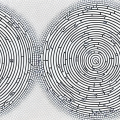The standard deviation of a sampling distribution plays an important role in statistical analysis. It can provide insight into the variability of a dataset and help inform decisions about how to interpret the results. To understand how the standard deviation of a sampling distribution is calculated, it helps to first understand what a sampling distribution is.
What is a Sampling Distribution?
A sampling distribution is a group of possible outcomes from a sample set of data. It’s created by taking many repeated samples from the same population. The samples are then compared, and their distribution is used to make an assessment of the population from which the sample was taken. The sampling distribution is used to identify trends and patterns in the data, as well as the level of variability among certain factors. This information can then be used to draw conclusions about the underlying population being evaluated.
The sampling distribution is an important tool for statistical analysis, as it allows researchers to make inferences about the population based on the sample data. It also helps to identify any potential outliers or anomalies in the data, which can be further investigated. Additionally, the sampling distribution can be used to calculate the probability of certain outcomes occurring in the population, which can be used to make predictions about future events.
The Relationship between Sample Size and the Standard Deviation
The sample size has an effect on the standard deviation of a sampling distribution. Generally, as the sample size increases, the standard deviation decreases. This is because larger samples provide more reliable information and therefore less variability between samples. On the other hand, smaller sample sizes provide less reliable results and create larger variations between samples, resulting in higher standard deviation values.
Factors that Affect the Standard Deviation of a Sampling Distribution
In addition to sample size, there are other factors that can affect the standard deviation of a sampling distribution. These include the shape of the distribution, the number of variables being measured, and the variance among different samples. These factors help explain why certain distributions have high standard deviations and others have low standard deviations.
Calculating the Standard Deviation of a Sampling Distribution
The calculation for a standard deviation of a sampling distribution is similar to other standard deviation calculations. It involves finding the mean, then subtracting each sample point or value from the mean and squaring these subtracted values. All of these squared values are then added up and divided by the number of sampled points -1, then the square root of this value is taken to get the final standard deviation of the sampling distribution.
Interpreting the Results of a Sampling Distribution
Once you’ve calculated the standard deviation for a sampling distribution, it’s important to understand what it means. Generally speaking, if the standard deviation is low, it implies that there isn’t much variation between samples and therefore a higher level of accuracy within the sample set. On the other hand, if the standard deviation is high, it implies that there is more variation between samples and therefore a lower level of accuracy within the sample set.
Strategies for Improving the Accuracy of a Sampling Distribution
Knowing how to interpret a sampling distribution’s standard deviation can help you make changes in order to improve its accuracy. Strategies such as increasing sample size or adjusting variables can be used to reduce the variability between samples and increase the accuracy of results. Additionally, measures such as removing outliers from data sets can also help improve the accuracy of a sampling distribution.
Examples of Common Sampling Distributions and their Standard Deviations
Different types of sampling distributions have different standard deviations, depending on what type of data is being evaluated. For example, a normal distribution will have a lower standard deviation than an exponential distribution. Similarly, a uniform discrete distribution will have lower standard deviation than an inverse normal distribution. Understanding which type of distribution best fits your dataset will help you determine its expected standard deviation.
Advantages and Disadvantages of Using a Sampling Distribution
Using a sampling distribution has both advantages and disadvantages. The major advantage is that they provide an unbiased assessment of a population since they are created by randomly selecting small samples from the population. However, they also depend heavily on sample size which can lead to inaccuracies if not enough samples are taken. Additionally, sample bias can be a factor since different datasets can cause skewed results if not properly adjusted for.
Conclusion
The standard deviation of a sampling distribution is an important factor when interpreting data, and understanding how it’s calculated can help you more accurately assess populations and draw meaningful conclusions from your data sets. Knowing which type of sampling distribution is best to use for your data can also help you determine its expected standard deviation and make changes to improve accuracy if needed.





